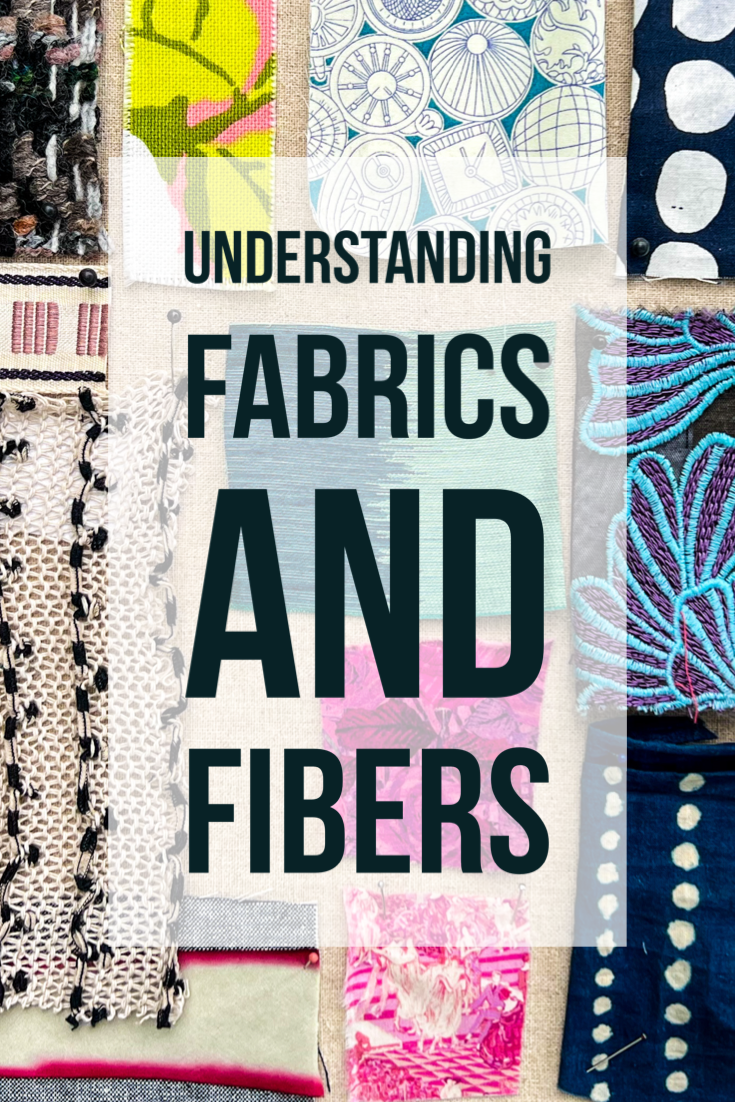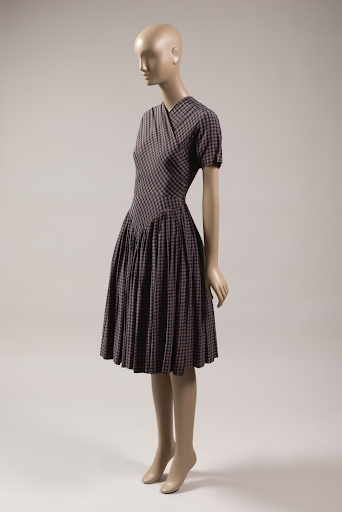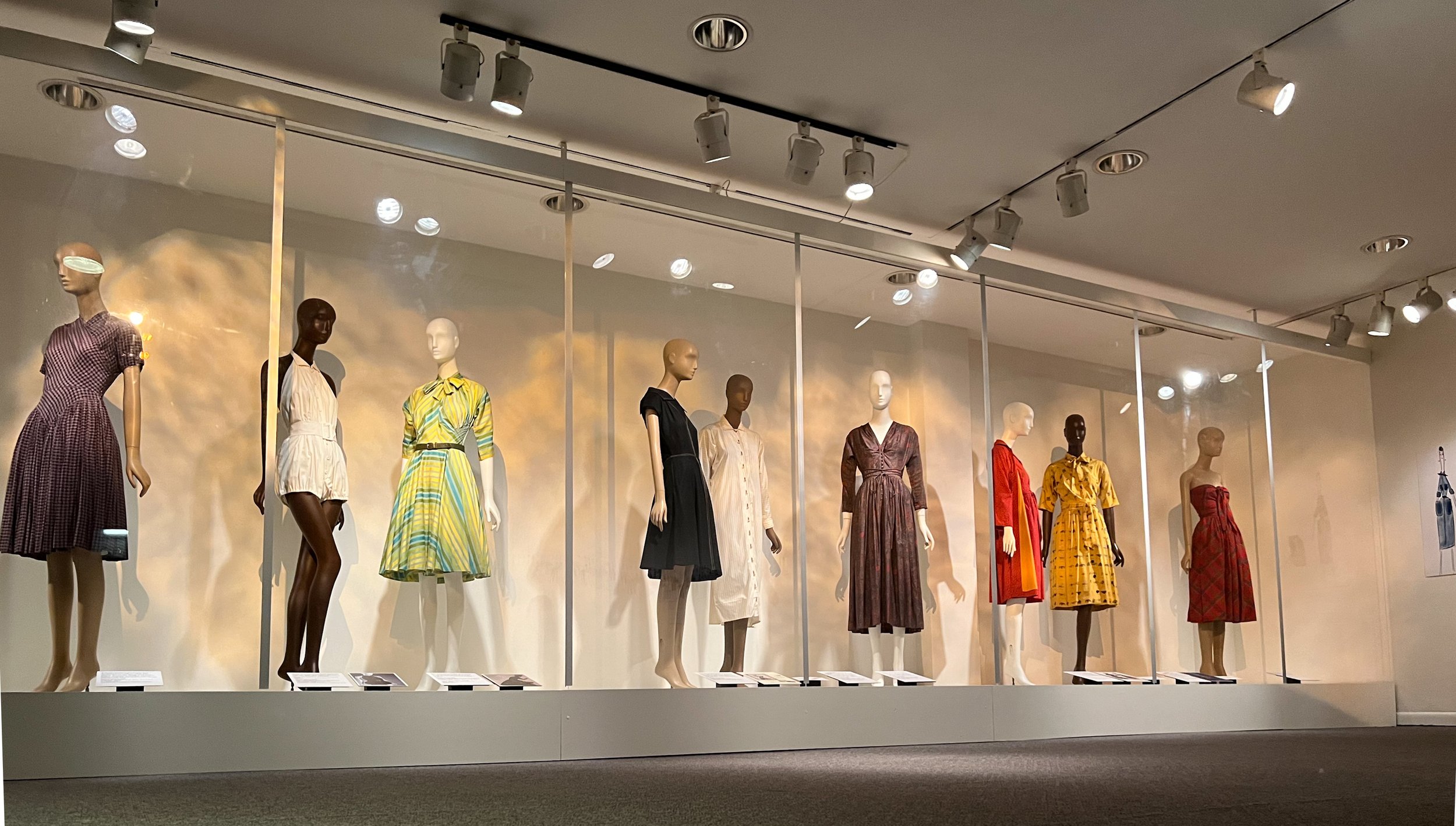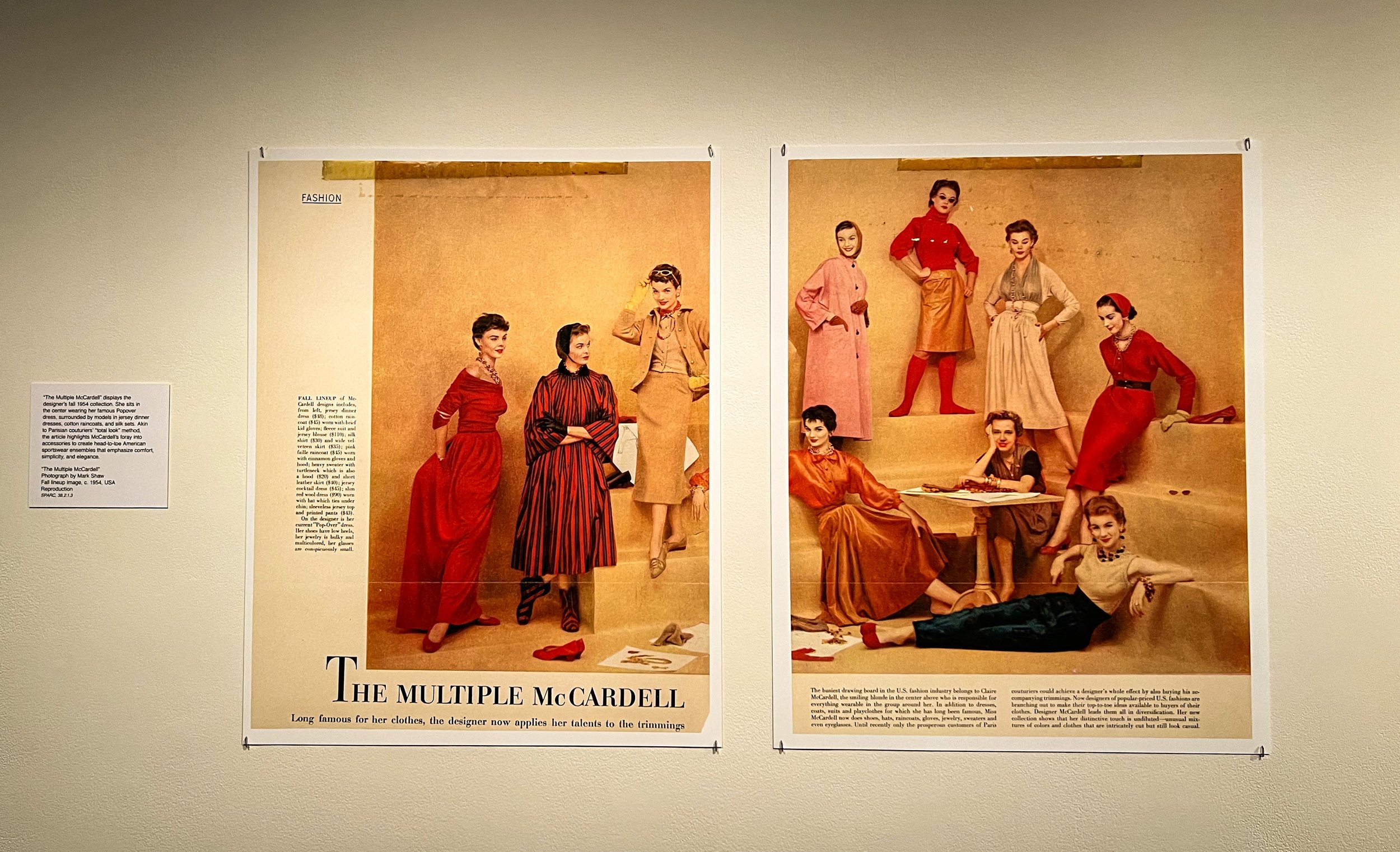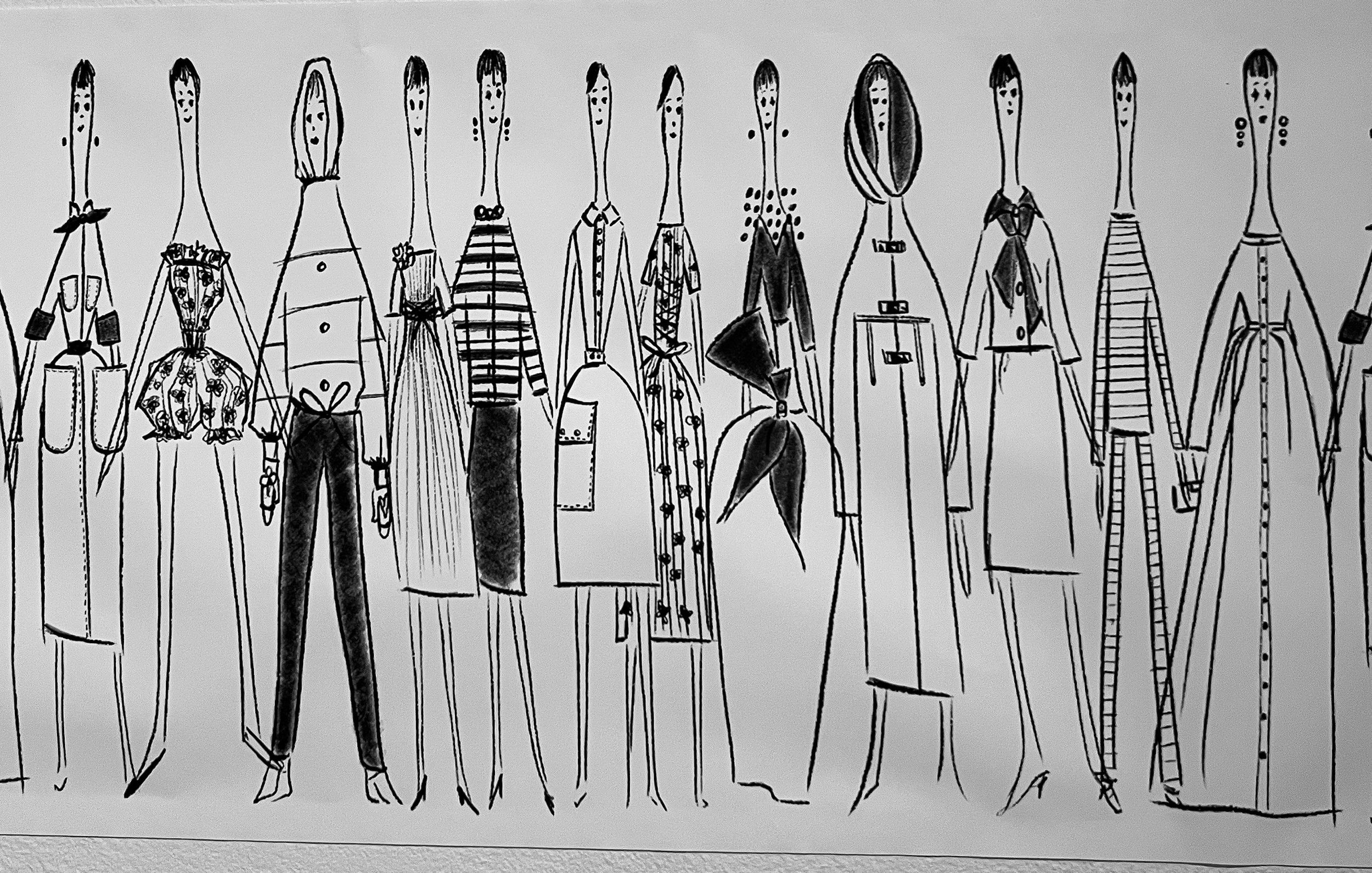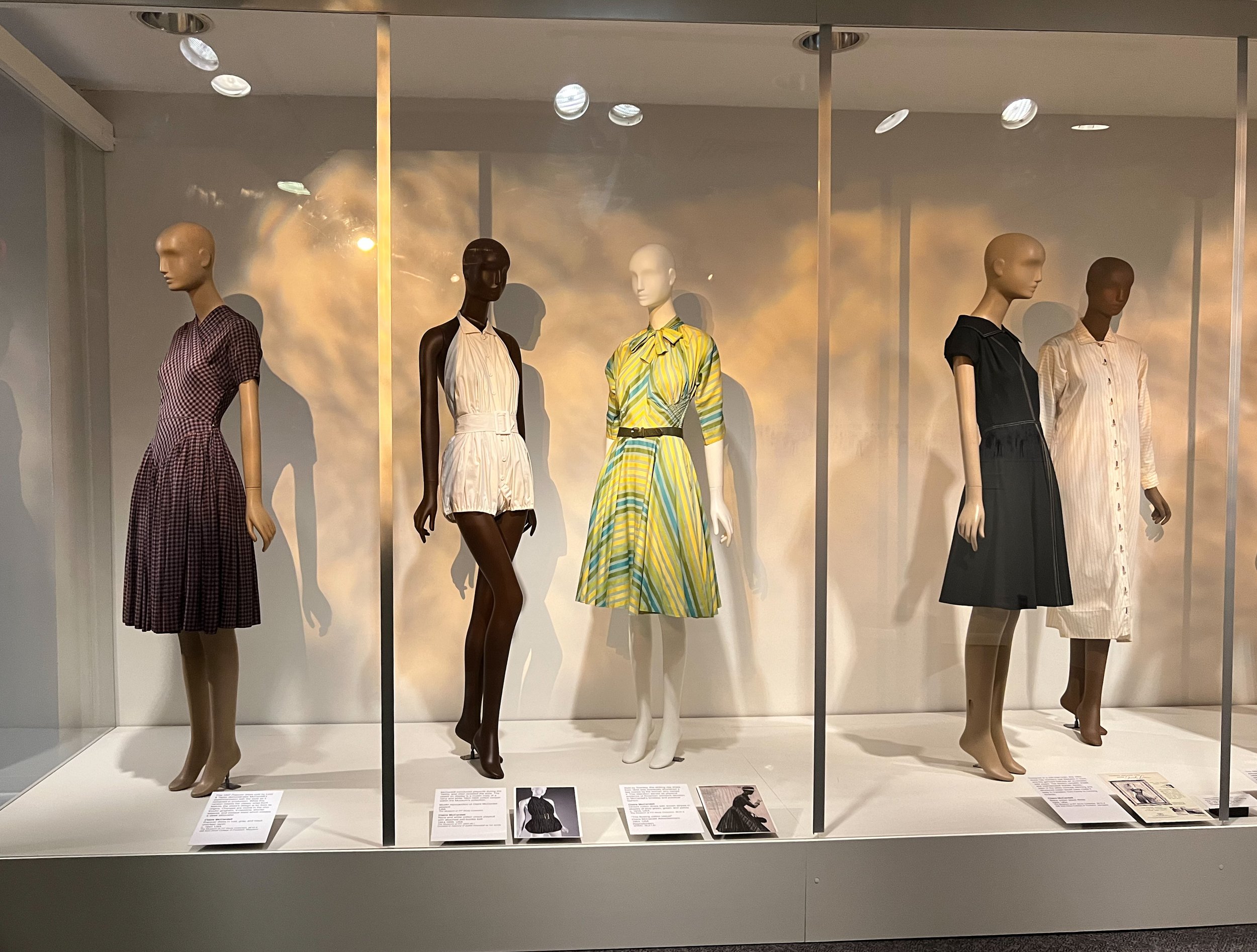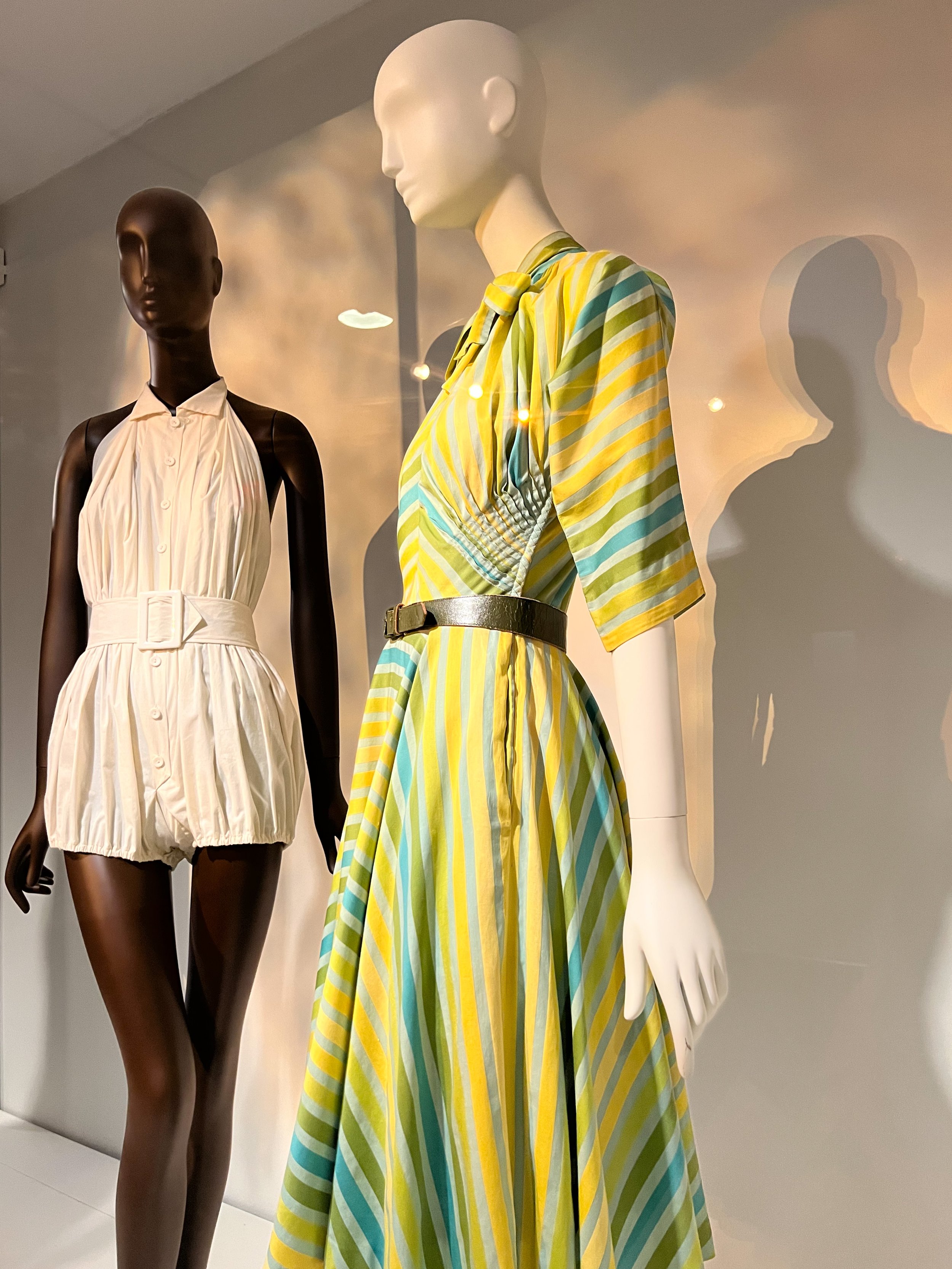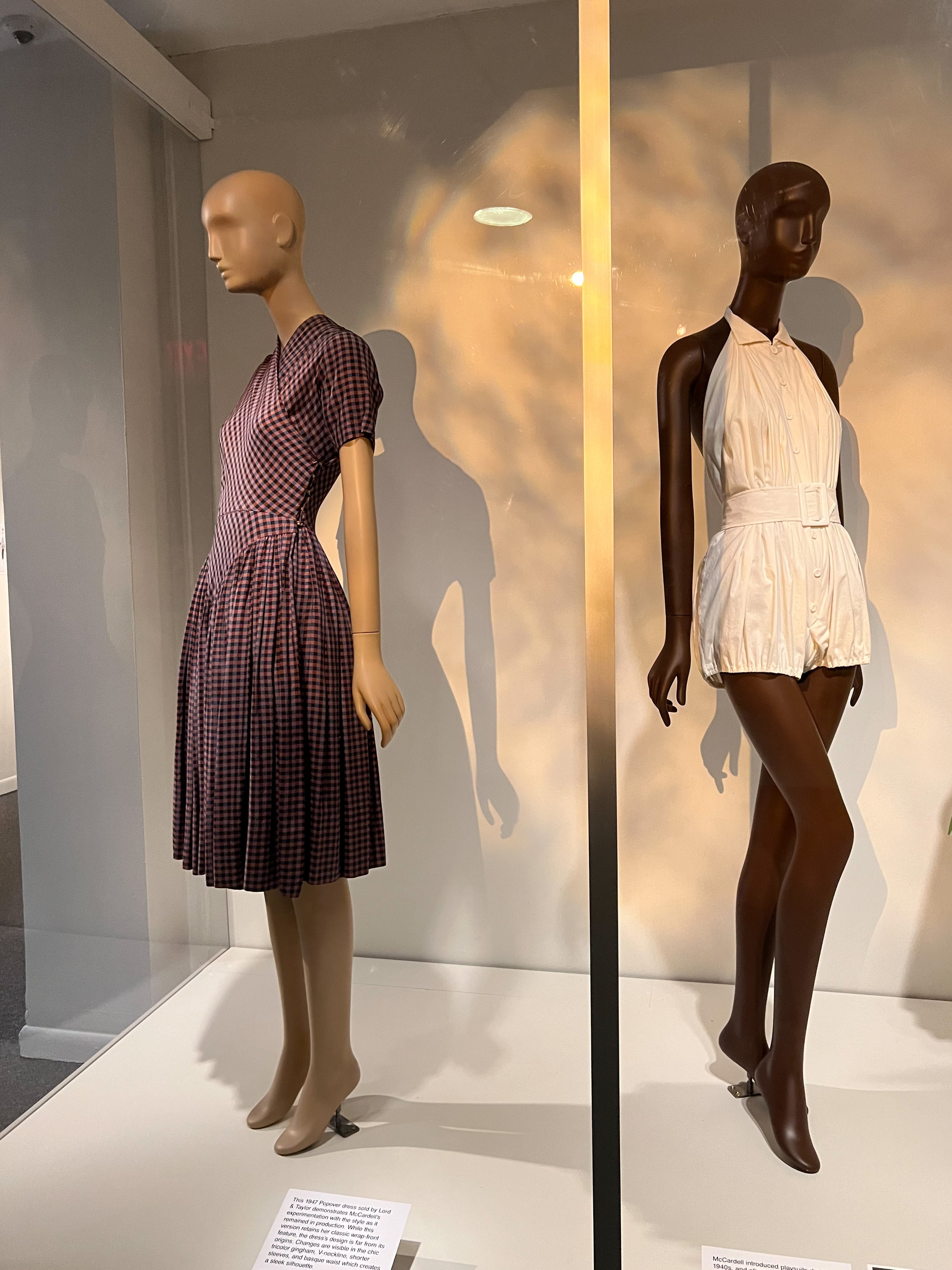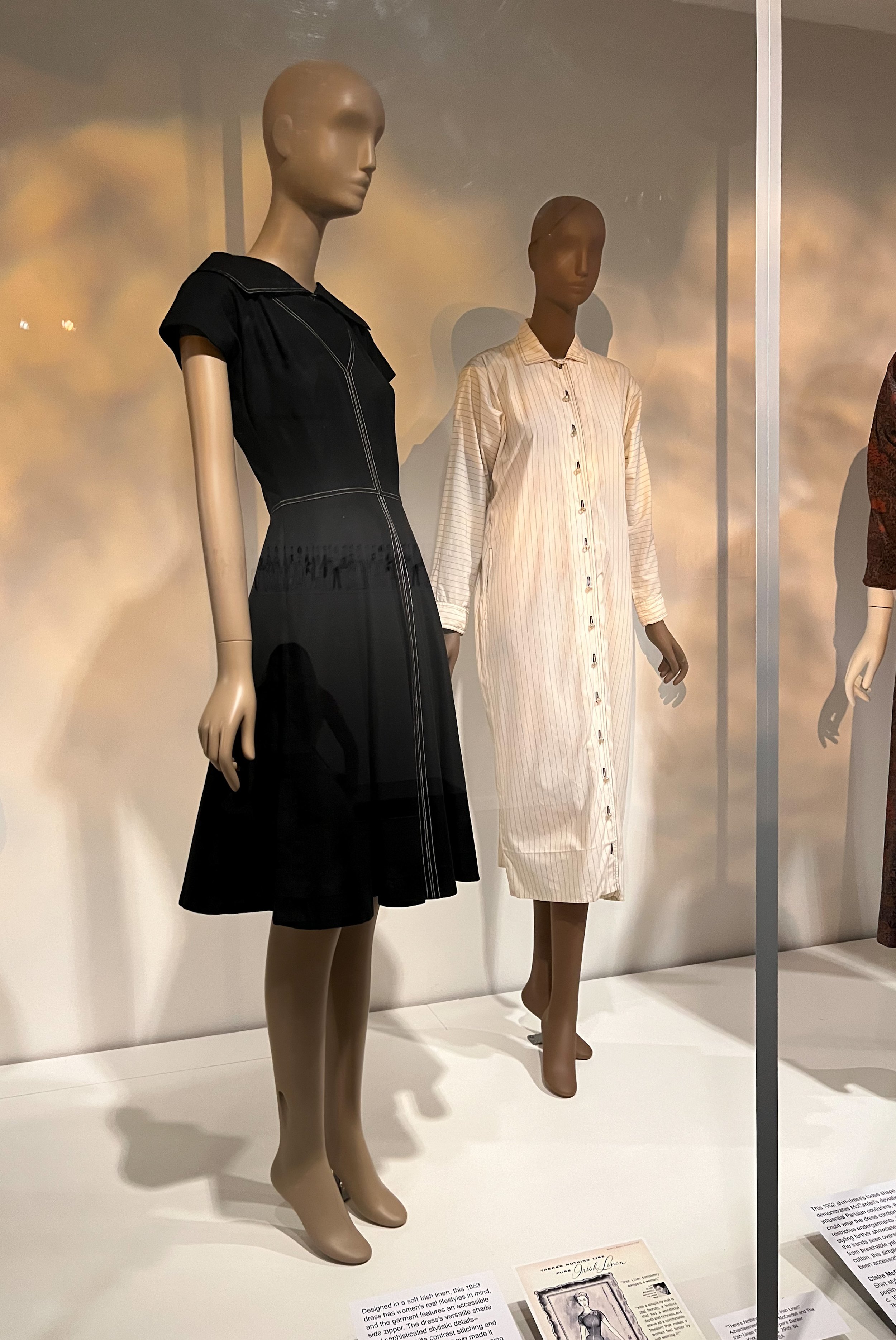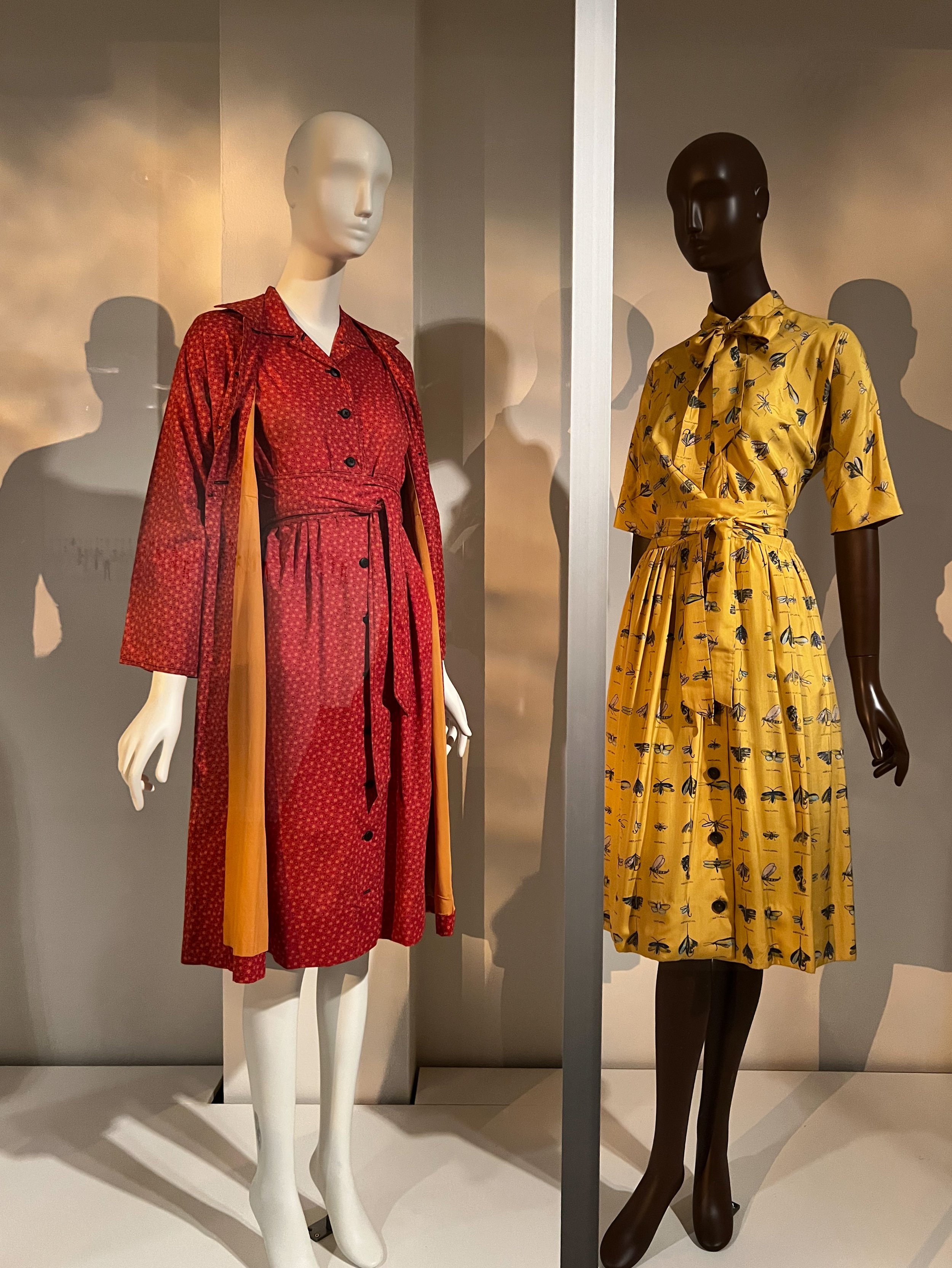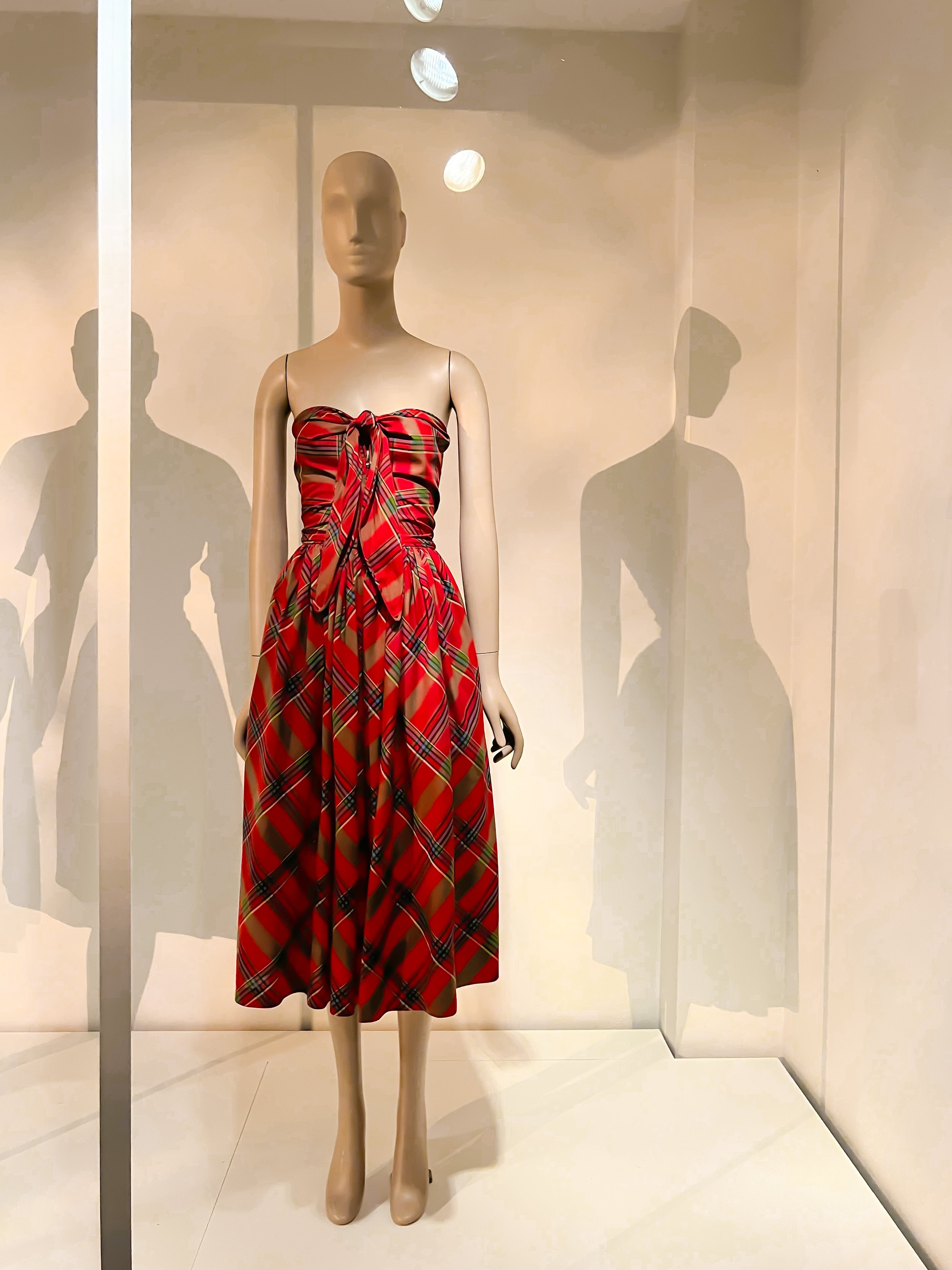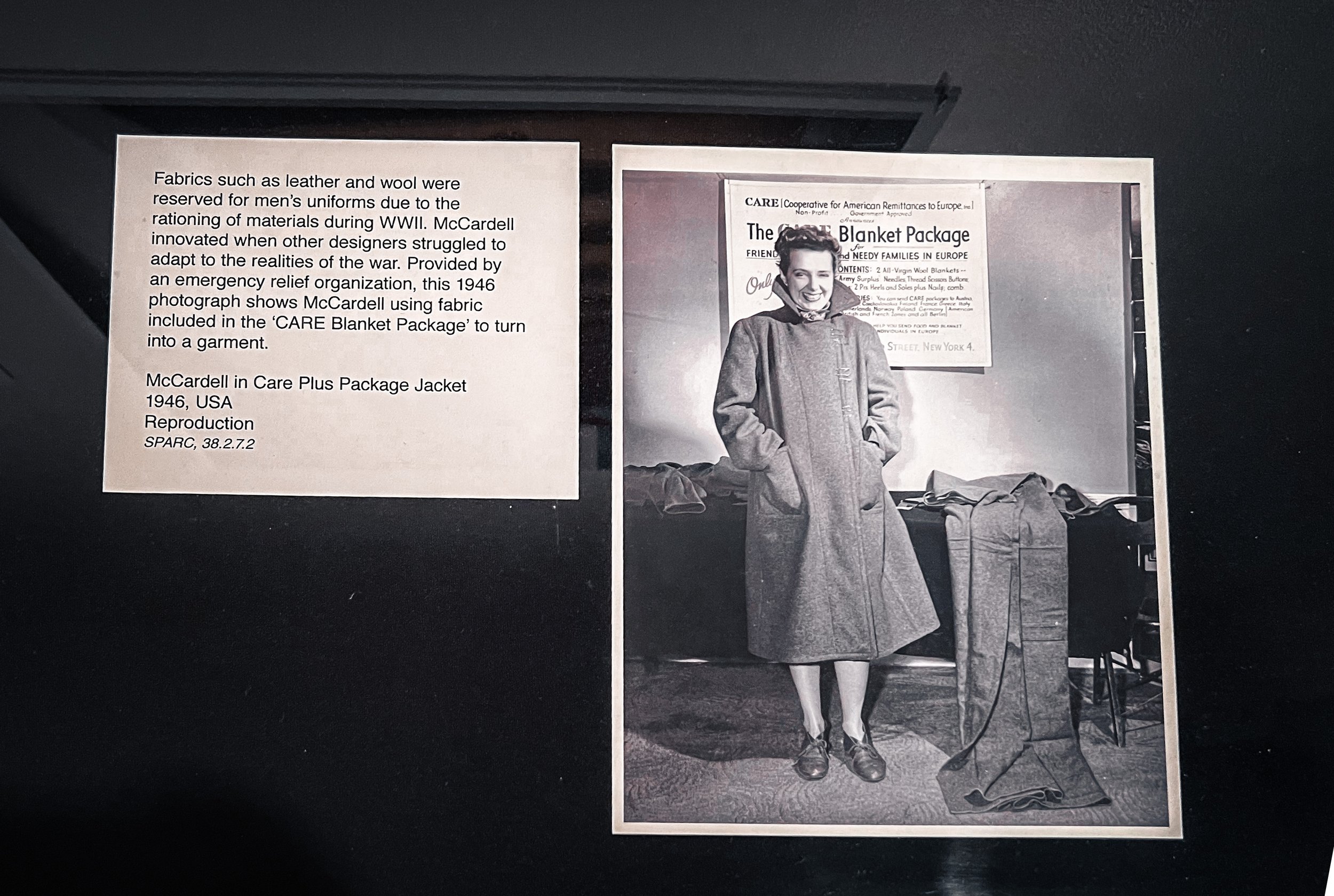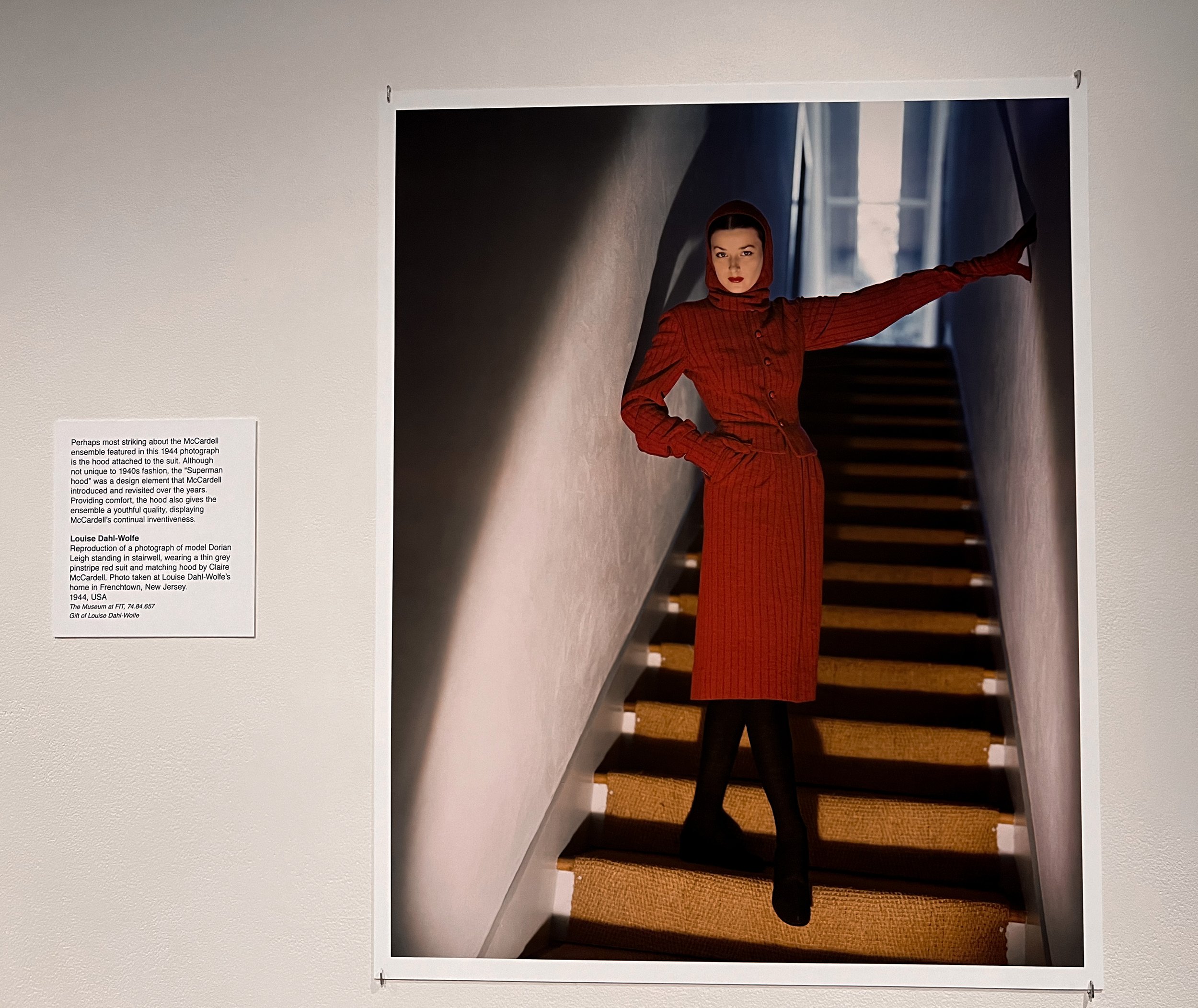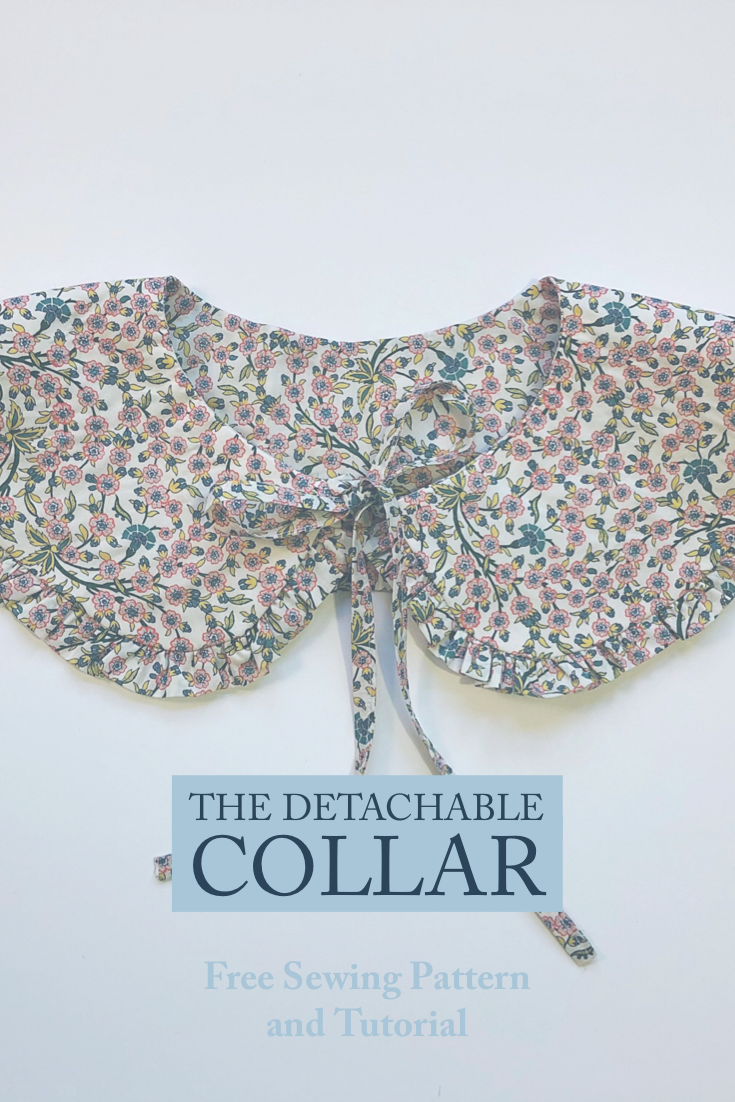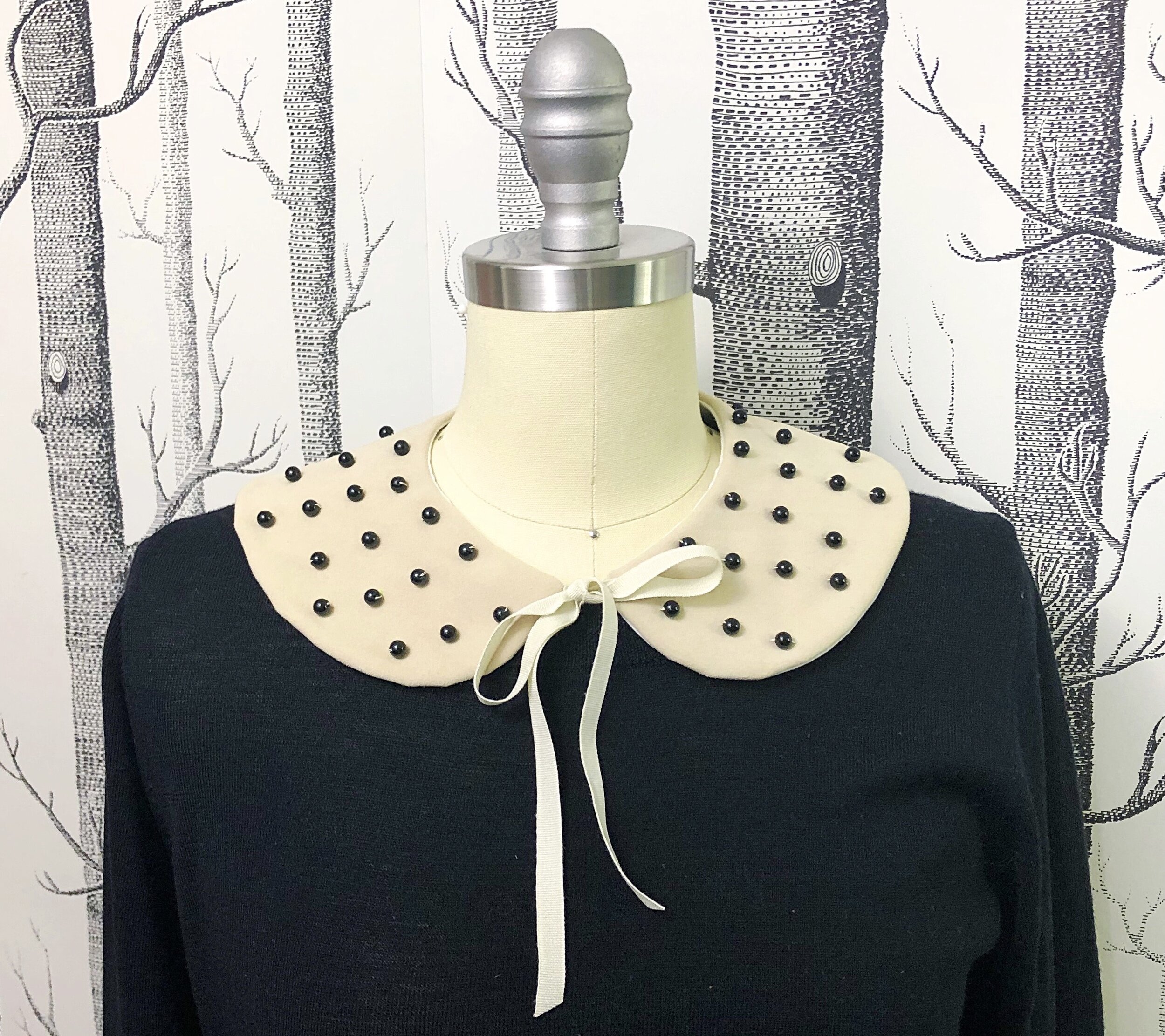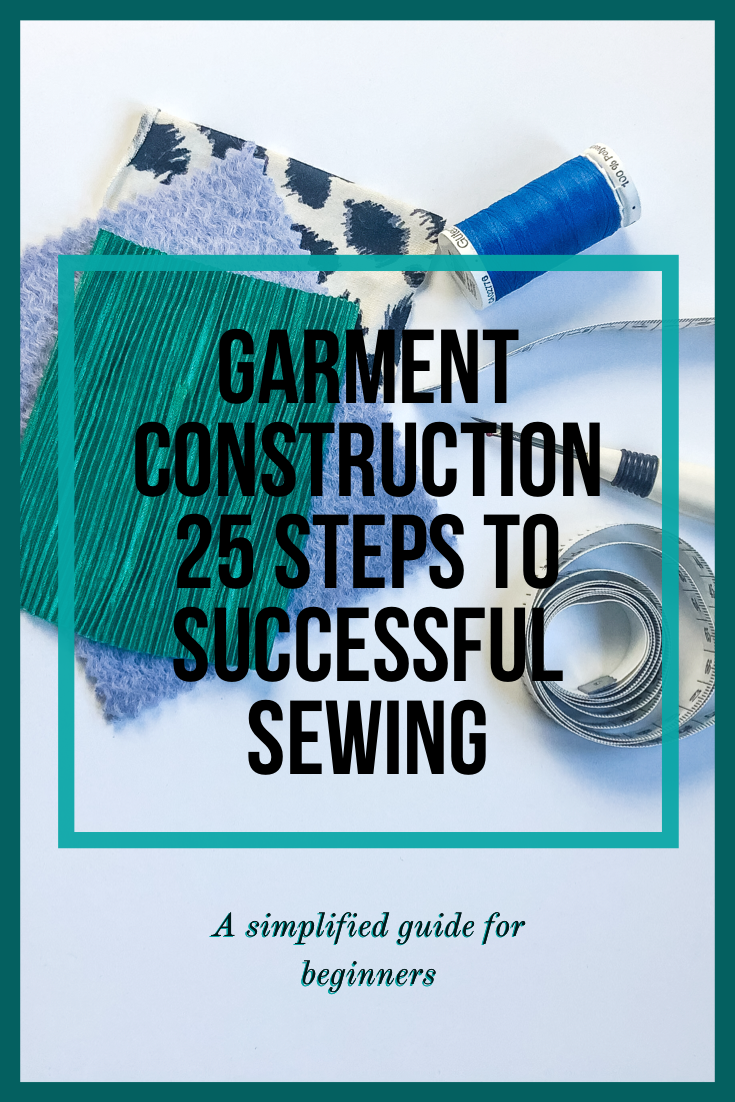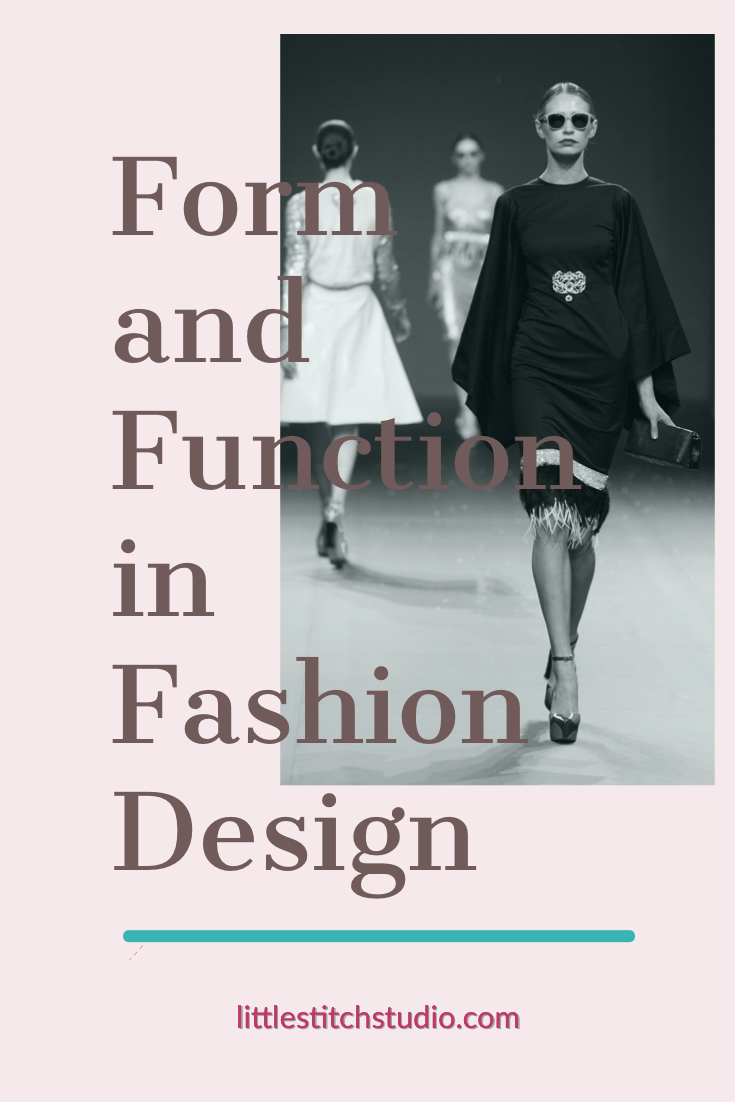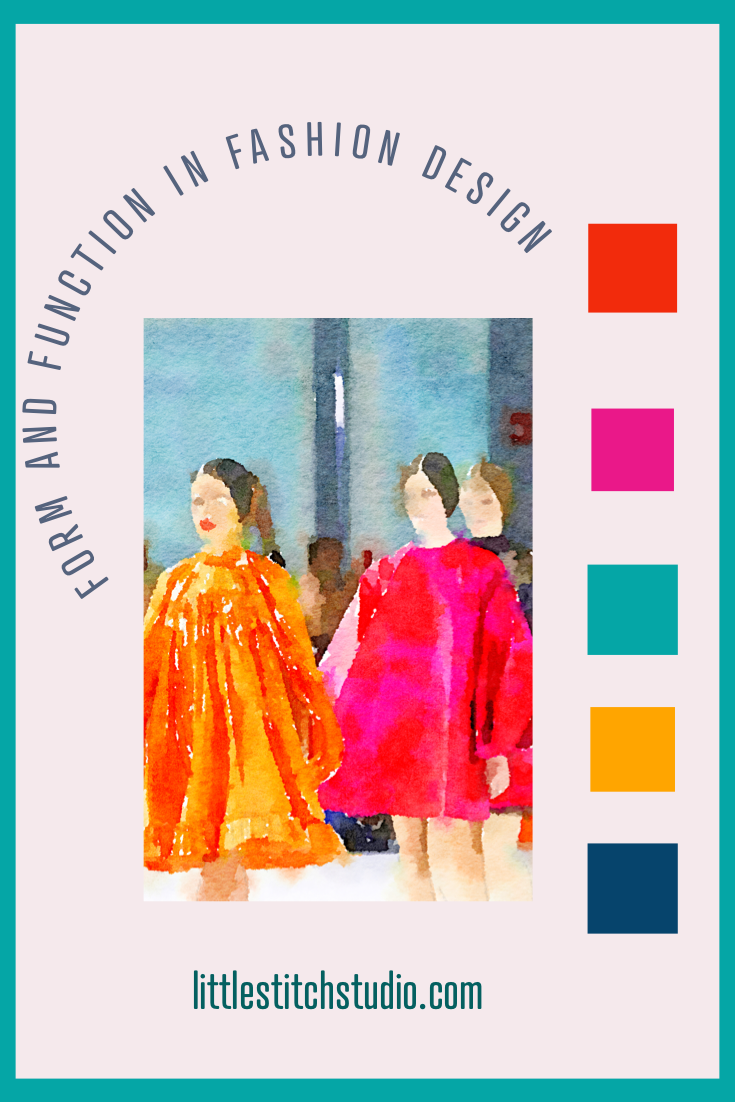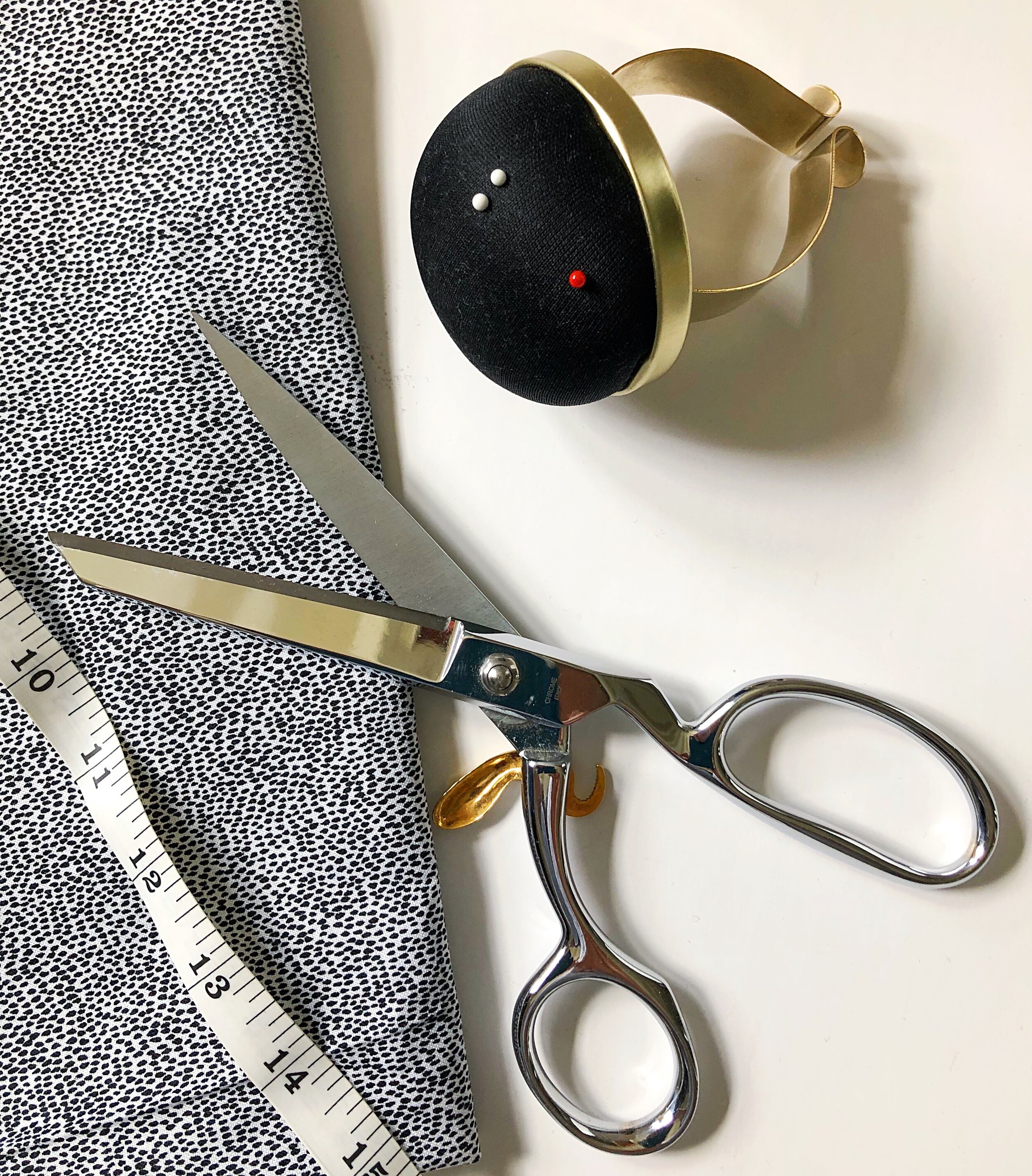A Guide to Fabrics and Fibers for Sewing
Have you ever stood in a fabric store, feeling overwhelmed by the myriad of fabric types, textures, weaves, and finishes, unsure of what to choose for your next project? Or perhaps you've purchased a fabric but have no idea what to make with it?
I am thrilled to share my latest project, Glossary of Fabrics and Fibers, A Guide to Textiles for Sewing.
I wrote this guide to help you to better understand the behavioral attributes of fabrics and fibers. To deepen your understanding of the foundational characteristics and essential vocabulary of textiles. Additionally, I share some general guidelines and advice for needle selection, thread, stitch type and length, seam finish, pressing, handling and care.
Free Fabric and Fibers Guide
Have you ever stood in a fabric store, feeling overwhelmed by the myriad of fabric types, textures, weaves, and finishes, unsure of what to choose for your next project? Or perhaps you've purchased a fabric but have no idea what to make with it?
I am thrilled to share my latest project, Glossary of Fabrics and Fibers, A Guide to Textiles for Sewing.
I wrote this guide to help you to better understand the behavioral attributes of fabrics and fibers. To deepen your understanding of the foundational characteristics and essential vocabulary of textiles. Additionally, I share some general guidelines and advice for needle selection, thread, stitch type and length, seam finish, pressing, handling and care.
With each page, you will gain insight into how different fibers react to wear and care, how weave affects drape, and why a particular finish might be used for some fabrics but not others.
This compilation is far more than a simple list of fabrics; it's a woven narrative that illuminates the world of textiles. Whether you're searching for the meaning of a specific term or casually browsing, you'll uncover the breadth and depth of textiles in all their forms—be they aesthetic, historic, geographic, scientific, economic, or technological.
This project began as a handout to give to the students that took my Fabric and Fibers class. Each time I sat down to write, I found that there was more to include. How can you describe fabric without knowing fiber, structure, and finish- and that’s before discussing even a single type of fabric! Now, it is more than a hundred pages!
I like to know why I’m doing something. It helps me to feel empowered and to make choices for myself . This is true in life, but also to my core values as a teacher. I want to honor where each student is and to provide them with the necessary context and connection to the purpose of the lesson. That’s a big part of this guide.
A Sneak Peek into the Guide
Are you curious about the intricacies of textile selection and the suitability for a given project? For instance, do you know which needle size and thread type are perfect for sewing with cotton jersey? Can you distinguish between plisse and seersucker, and do you understand how their differences might impact your project? Have you ever wondered about the ideal fabric and fiber choices for crisp, lasting pleats?
All this and more to share with you! From Acetate to Zibeline, over 100 pages of information about fabrics and fibers is yours to weave a new layer of knowledge into your sewing.
Claire McCardell Exhibition at FIT: Exploring Fashion's Pioneer
In the world of fashion, certain designers leave an indelible mark on the industry, shaping trends and redefining the way we dress. One such visionary is Claire McCardell, whose groundbreaking designs continue to inspire and captivate fashion enthusiasts even today. In April, I was able to see a captivating exhibition celebrating the remarkable legacy of Claire McCardell, at the Museum at the Fashion Institute of Technology (FIT): Claire McCardell, Practicality Liberation, Innovation. This small exhibit showcased some of her revolutionary designs while highlighting her enduring influence on contemporary fashion.
Claire McCardell
Practicality, Liberation, Innovation
Claire McCardell, Popover dress, rayon, brass hooks & eyes, c. 1947, Lord & Taylor, American, founded 1826, Gift from Hood College of Frederick, Maryland, 96.61.6
In the world of fashion, certain designers leave an indelible mark on the industry, shaping trends and redefining the way we dress. One such visionary is Claire McCardell, whose groundbreaking designs continue to inspire and captivate fashion enthusiasts even today. In April, I was able to see a captivating exhibition celebrating the remarkable legacy of Claire McCardell, at the Museum at the Fashion Institute of Technology (FIT): Claire McCardell, Practicality Liberation, Innovation. This small exhibit showcased some of her revolutionary designs while highlighting her enduring influence on contemporary fashion.
As a lifelong McCardell fan, the is the second exhibit of her work that I have seen in six months. Before then, it had been about 30 years. Needless to say, I was thrilled.
A Pioneer in American Fashion:
Claire McCardell, born in 1905, emerged as a pivotal figure in American fashion during the mid-20th century. Known for her avant-garde approach to design, McCardell challenged conventional norms by prioritizing comfort, practicality, and freedom of movement in her garments. She played a significant role in shaping the modern concept of American sportswear, which emphasized simplicity, functionality, and wearability.
The exhibition was organized by four college seniors in the undergraduate program in Art History and Museum Professions (AHMP Program) at FIT. The garments showcased, are culled from the FIT Study Collection, with additional historical records from the Gladys Marcus Library’s Special Collection & College Archives.
Organized into three sections, Practicality Liberation and Innovation, this exhibit offers visitors a unique opportunity to witness the evolution of McCardell’s career and gain insights into her creative process. The curation captures McCardell's distinctive style, highlighting her groundbreaking use of fabric, innovative garment construction techniques, and keen eye for detail.
McCardell's designs were characterized by their clean lines, unstructured silhouettes, and inventive use of fabrics such as denim, menswear suiting woolens, and cotton. She introduced several innovative design elements that are now considered industry standards. For instance, the use of unique closures, such as grommets and hooks and eyes, spaghetti string ties and well-proportioned pockets are all McCardell-isms. The ballet flat as a shoe style, now a staple in every woman's wardrobe, can be traced back to McCardell's ingenious creations. She also popularized the concept of mix-and-match separates, allowing women to effortlessly combine different pieces to create versatile outfits.
Challenging Norms and Promoting Individuality: McCardell's designs not only prioritized comfort and practicality but also challenged societal norms, encouraging individuality and self-expression. She designed clothing that catered to the changing needs of women, both in domestic and public spheres, and even adhered to war rationing guidelines. By liberating women from cumbersome and restrictive clothing, McCardell truly transformed the fashion landscape. Her emphasis on functionality and ease of wear continues to resonate with modern designers, ensuring her lasting influence.
Below is a gallery of images of the garments.
Beyond showcasing McCardell's designs, the exhibition walls and tables were lined with reproductions of photographs as well as advertisements, flyers, newspaper clippings and letters to place the social and cultural context in which her work emerged. Visitors were encouraged to contemplate the impact of World War II on fashion and witness how McCardell's designs responded to the era's challenges, embracing a sense of optimism and liberation.
Claire McCardell's trailblazing designs serve as a source of inspiration for students, designers and enthusiasts alike. Her ability to bridge the gap between high fashion and practicality continues to influence contemporary fashion, encouraging the exploration of innovative techniques and the creation of garments that empower individuals to express their unique style.
The Claire McCardell exhibition at the Museum at FIT is a testament to the enduring legacy of this remarkable designer. Her contributions to American fashion, her innovative design philosophy, and her unwavering commitment to creating comfortable yet stylish clothing continue to inspire and captivate fashion enthusiasts and designers alike. Exploring the exhibition provides a glimpse into McCardell's revolutionary designs and the profound impact she had on shaping the fashion industry. Claire McCardell's remarkable vision serves as a reminder that fashion can transcend trends and that timeless design can continue to shape and influence the way we dress for generations to come.
/\/\/\/\/\/\/\/\/\/\/\/
Hilarie
To see more photos, follow the hashtag on social media. #clairemccardellMFIT
The Detachable Statement Collar Free Sewing Pattern and Tutorial
Statement collars are everywhere right now- and with good reason. They can be easily tied on over tees, coats, sweaters and even dresses for an instant outfit upgrade. The collars are really easy to make and to give as gifts too!
Detachable Statement Collar Free PDF Sewing Pattern and Tutorial
Statement collars are everywhere right now- and with good reason. They can be easily tied on over tees, coats, sweaters and even dresses for an instant outfit upgrade. The collars are really easy to make and to give as gifts too!
From pristine white collars with lace trim to knitted capelets and quilted denim, there are collars for every occasion and outfit. Beaded collars, fur collars, collars with plumes, collars with lace, collars with piping, and tiers of ruffles. For someone who loves fashion and sewing, these collars offer a sewist a chance to pull out all of the stops and finally try an embellishing technique that perhaps has seemed too daunting for a larger project.
Detachable statement collars are really easy to make- the hard part is choosing a style as there are so many new and fun options. Mini, maxi, round and pointed. Lace, ruffles, trimmed and beaded- the variations are endless. I thought you might enjoy learning all about collars in general and how to make and customize them. To that end, I have designed a group of patterns that I will share with you over the coming lessons. To that end, you can think of this as a sort of mini-course in collars.
The pattern is available for download here and also at weallsew where you will find the step by step tutorial. I can’t wait to see what you make!
New to using PDF sewing patterns? Check out this link for tips on assembly.
Head over to weallsew to download and get the tutorial.
Happy Sewing!
XOXO, Hilarie
A Garment Construction Plan; 25 Steps to Successful Sewing
I’ve always loved the excitement and sheer certainty that comes with starting an ambitious new project. Once the fabric is in hand, it feels like it is only hours until I get to wear this dream de jour. Each moment spent preparing, is filled with thoughts such as, “what shoes should I wear with it?” “What kind of bag goes with awesome?” Oh and – “where will I wear it?” Of course, as a mom, I quickly realize that time slips away and those mere hours from concept to ‘all decked out’ turn into weeks or months. When I was much younger, it was nothing to stay up all night and sew a new outfit for school the next day, or for some dance or occasion. I can still picture myself sitting on the floor in my room, sketching, cutting, sewing and dreaming the days away. I’ve managed to hold onto a few of those pieces that I made early on. When I look at them now, part of me is appalled by the lack of skill and obvious haste in which these clothes were made- but the other is touched with the charming memories and joy of the sheer zeal and passion of my younger self.
I’ve always loved the excitement and sheer certainty that comes with starting an ambitious new project. Once the fabric is in hand, it feels like it is only hours until I get to wear this dream de jour. Each moment spent preparing, is filled with thoughts such as, “what shoes should I wear with it?” “What kind of bag goes with awesome?” Oh and – “where will I wear it?” Of course, as a mom, I quickly realize that time slips away and those mere hours from concept to ‘all decked out’ turn into weeks or months. When I was much younger, it was nothing to stay up all night and sew a new outfit for school the next day, or for some dance or occasion. I can still picture myself sitting on the floor in my room, sketching, cutting, sewing and dreaming the days away. I’ve managed to hold onto a few of those pieces that I made early on. When I look at them now, part of me is appalled by the lack of skill and obvious haste in which these clothes were made- but the other is touched with the charming memories and joy of the sheer zeal and passion of my younger self.
In the decades that have passed, I’ve refined my skills. While some of my training has been formal, much has been learned through trial and error. It takes time to learn to sew well. Part of it is being able to execute a set of individual skills, but so many aspects of sewing are interdependent. Fabric, fit, structure, design; if any one of these is less than ideally balanced then the project is a flop.
There are as many methods and ways to sew as there are people who sew. Some of my favorite projects for beginners- and anyone who is enthusiastic about sewing, are purses and other wearable fashion accessories. They are fairly quick, a great opportunity to try out new techniques and don’t always require lots of fabric and experience. In fact, if you are ready to jump in right now, I have written a lots of blog posts with tutorials and a couple of books on sewing fashion accessories. (Shameless plug!)
Cutting, marking, pinning, basting, stitching, seam finishing, trimming, pressing, stabilizing- all of these techniques are used in sewing over and over no matter what it is you are making. While there is a general order of construction to follow, and some guidelines, there happen to be a lot of exceptions too. This can lead to unnecessary frustration for beginners!
When you buy a pattern, whether indie or from one of the big commercial companies, you will find several pages of directions for constructing the project. The instructions begin with a few line drawings and a list of pattern pieces that will need to be cut out, marked and sewn together. Most beginner – Intermediate patterns will rely on the method of unit construction. Unit construction means that you will work on a single piece, completing as much as possible before moving on to the next. This method offers many advantages to the beginner. By keeping the work flat, it reduces handling of the fabric which could lead to stretching and distortion in inexperienced hands. The straightforward finishing and construction is mostly completed on the machine, which speeds up the sewing process. When you are learning how to sew, there are so many details that you need to consider, that projects calling for very basic techniques and few pattern pieces are a great place to begin.
As you gain more sewing experience, you will begin to anticipate the sewing instruction order. The easier patterns will use basic construction methods, but as you move on to more advanced styles, you will be working on multiple steps at once. Pattern instructions are often minimal and presuppose some type of working knowledge. This is where books, sewing classes, and articles about specific techniques come in handy- they help to fill in the knowledge gap.
No matter how simple or advanced a project you are making, the steps will be outlined with a plan. With this plan, even complicated construction can be simplified. A sewing project begins with preparing the fabric and pattern before moving on to fitting, shaping and finishing. Some patterns have more information and are more detailed than others. I have found that those new to sewing are often apprehensive to work bit out of order from the pattern for fear of ruining their project. Additionally, many patterns that my students bring in are written without much emphasis on fitting and finer finishes.
With this in mind, I have written a plan for garment construction with an eye toward fitting and design. Of course, this list is not exhaustive and will not apply to every project. Some of your garments you make may not have every detail that I’ve mentioned- and some will have more. I encourage you to use this as more of a companion to your pattern instructions so that you can begin to make connections to the steps and to discover how to integrate new techniques.
Over the course of the next few weeks, we can take a deeper look into the organization of this plan. My goal is to help you to not only understand what you are doing, but why. Once you understand that, sewing will become so much easier.
Garment Construction Plan
25 Steps to Success
Preparation
Study the pattern.
Compare your body measurements to the pattern and make any necessary pattern adjustments.
Prepare the fabric by straightening the grainline.
Layout the fabric and pattern pieces. Pin (or use weights) fabric to pattern when you are pleased with the layout.
Once you have determined that you have all of the necessary pieces laid out correctly on the grain, double check again to confirm before cutting.
Mark all of the construction details.
Staystitch each garment section.
Interface each area as suggested in your pattern.
Stitch and press all darts, tucks, pleats or gathers.
Shaping
Prepare all lining or underlining.
If there are any style lines such as a yoke or princess seams, pin and stitch.
Stitch the center front and center back seams.
Prepare and apply style details such as tabs and pockets.
Baste the shoulder seams.
Baste the side seams and inseam.
Try on for fit. If you are pleased with the fit, go ahead and stitch the shoulder, side seams and inseam. Remove basting.
When the design calls for a waistband, prepare and attach it to the seam.
When the style features a collar, make it.
When the design calls for sleeves, set and stitch the sleeves
If a neckline or armhole needs a facing, prepare and attach the facing.
Finishing
If a zipper is needed, insert it.
Finish the inside seams.
Set and sew the hems
Add the closures-buttons, buttonhole and snaps..
Complete any other hand finishing.
*Throughout each step, have your iron and pressing cloth ready.
Here is a handy PDF of versions this plan for you to print and keep with your sewing books and patterns.
The Basic Principles of Garment Construction: Functional, Structural and Decorative Design
The Design Process
Fashion is all about illusions, line, color, space and texture. These concepts are based on the Principles and Elements of Design. It doesn’t matter if we are talking about designing couture gowns, tailoring, fashion accessories, kids wear or pet clothes. These foundational art principles become primary considerations in construction. Sewing is an art, that of making beautiful clothes. It takes time, thought and practice.
Why Construction Should Matter
Clothing construction refers to the stitching of garments and all the sewing techniques involved in the process. Every choice and detail: pockets, seams, seam finishes, zippers, facings, linings, interfacings, closures and hems, as well as a good understanding of fabric are all intertwined.
Having a strong understanding of construction will help you to become more confident in handling your sewing projects. You will no longer be beholden to the pattern as written. Understanding construction will allow you to confidently move a dart or eliminate an unwanted detail. You will begin to understand how and why pattern pieces are joined in a particular way and order.
Fashion is all about illusions, line, color, space and texture. These concepts are based on the Principles and Elements of Design. It doesn’t matter if we are talking about designing couture gowns, tailoring, fashion accessories, kids wear or pet clothes. These foundational art principles become primary considerations throughout the construction process. Sewing is an art, that of making beautiful clothes. It takes time, thought and practice, plus lots of experimentation.
Why Construction Should Matter
Clothing construction refers to the stitching of garments and all the sewing techniques involved in the process. Every choice and detail: pockets, seams, seam finishes, zippers, facings, linings, interfacings, closures and hems, as well as a good understanding of fabric are all intertwined.
Having a strong understanding of construction will help you to become more confident in handling your sewing projects. You will no longer be beholden to the pattern as written. Having savvy construction skills will allow you to confidently move a dart or eliminate an unwanted detail. You will begin to recognize how and why pattern pieces are joined in a particular way and order.
Function, Structural and Decorative Design
As with other types of applied design, fashion design is a process of seeking a match between a set of requirements and clever ways of meeting them. The success of any design depends on the designer’s ability to combine aesthetic sensibility with a strong technical knowledge. Clothing as a wearable art needs to be, well, wearable. Which means that it needs to fit and flatter, to be taken off, cleaned and worn again. The age old dilemma of form vs. function.
Functional Design
With clothing, it is impossible to separate design and fit. The garment needs to feel comfortable. It needs to provide adequate room to move, while still maintaining its shape, or form. The selected fabric needs to be a suitable weight and appropriate for the garment.
What type of garment are you making? Is it intended for a specific season? How will you care for it? Does it need to provide protection? What kind of activity will you be engaged in while wearing? Swimming? Running? Sleeping?
You see, there is a symbiotic relationship between the materials chosen and the approach to construction. Functional design is really about appropriateness. How the garment physically works and preforms.
Some may be quite obvious, for example, uniforms for police, firefighters and physicians. They all need specific protection for their unique job. Of course, all clothing, with the exception of a concept piece, needs to be functional to actually be worn. A t-shirt or sweater needs to pull over the head to get it on and again to remove. Pants and skirts need to be held up at the waist or hip and have some sort of way to anchor to the body. It is in this way that you can see how fashion and function go hand in hand.
Structural Design
The structure of a garment is everything that holds the garment together. The fabric, the seams, shaping and everything that goes on between the outer fabric and the inside. It incorporates a number of different elements depending on the desired look that you want to achieve.
A garment which has been nicely made and neatly finished will wear better over time, it will also sit better on the body. Sometimes when a garment is not finished correctly small details will not seem to hang nicely on the body – a collar won’t roll quite the right way, a neckline won’t sit quite flat or a lining will bunch up in the wrong areas. A large part of the ability to control the shape of the garment is in giving the correct structure to support the silhouette.
Decorative Design
After the functional and structural details have been carefully considered, decorative design is next! What is Decorative Design? Decorative Design refers to the decorative surface finish, but it is often what catches your eye and draws you to a garment. Details such as buttons, bows, trim, embroidery, prints, pattern and color. These embellishments can be paired to enhance a design or to subvert it. Their purpose may be completely decorative, but is always carefully considered.
As is often the case, the beauty of a garment isn’t in the “decorative element” but in the lack of embellishment. Working within a minimalist framework, a mix of clever pattern cutting, strong construction skills and correct structure can sometimes be just as innovative and modern as any surface design.
In fashion sewing, you can see how a broad appreciation of function, structure and decorative design is necessary. Not one of these is exclusive, as each needs to be considered on individual merits as well as how they relate to the whole garment. Some designers start with their end product in mind and experiment endlessly until they can turn their mental images into a physical form. Others start from a point of experimentation and allow for happy accidents. The beauty of great design is less about strict rules and more about the consideration of balance and innovation.
Next week’s lesson:
Order of Operations in Garment Sewing
Introducing: The Basic Principles of Garment Construction, A New Blog Series
So many of you are discovering the possibilities that open up when you learn to sew. With even a basic set of skills, you can begin to make simple clothing, fashionable accessories and home decor projects. Soon you may find yourself searching for patterns, fabric and fancy new sewing machines. Suddenly a whole new world opens up- it really is an exciting time.
Well, that is until it isn’t.
There are so many frustrating moments that you will encounter when learning to sew. Tangled threads, broken needles, machine malfunctions. All normal stuff- I promise. You see, there is a difference between knowing how to sew and how to sew well. Learning to sew well takes time and patience. Yes, you will continue to make mistakes, I still do! But it is through these mistakes that you can begin to really learn why things need to be done in a certain order or way – and what happens when you don’t.
So many of you are discovering the possibilities that open up when you learn to sew. With even a basic set of skills, you can begin to make simple clothing, fashionable accessories and home decor projects. Soon you may find yourself searching for patterns, fabric and fancy new sewing machines. Suddenly a whole new world opens up- it really is an exciting time.
Well, that is until it isn’t.
There are so many frustrating moments that you will encounter when learning to sew. Tangled threads, broken needles, machine malfunctions. All normal stuff- I promise. You see, there is a difference between knowing how to sew and how to sew well. Learning to sew well takes time and patience. Yes, you will continue to make mistakes, I still do! But it is through these mistakes that you can begin to really learn why things need to be done in a certain order or way – and what happens when you don’t.
To truly master anything, it is not enough to know how to do something- you also need to know why.
Introduction to Garment Construction
In this series, my intention is to guide you step by step through a variety of methods and techniques to help you to gain a true understanding of the fundamentals of sewing. Through hands on practice, I hope that you will begin to notice the underlying construction principles and techniques that come up in sewing again and again.
Cutting, marking, pinning, basting, stitching, seam finishing, trimming, stabilizing- all of these techniques are used in sewing over and over no matter what it is you are making. It really helps to understand why each step is necessary and how it will relate to your final project. Though there are many ways approach a single technique, I will share with you what works best for me. Please don’t expect any shortcuts, as that is not what I do. Instead, I believe in spending time to develop a very special set of skills that will set your work apart and help you to create the pieces that you dream of.
Get your scissors ready!


